New
Click-to-Instagram Direct Ads

Gone are the days when brands advertised and customers simply purchased. Today, consumers prefer to interact with brands before they buy from them.
That’s where conversational marketing comes in.
Conversational marketing enables one-on-one interactions between customers and brands, mostly in real-time, across multiple channels.
Consider these stats:
But why do customers prefer messaging?
Because it makes them feel positive about brands and builds trust, among other reasons.

The good news! Online interactions are now easily possible. Thanks to the various messaging platforms – Facebook Messenger, WhatsApp, SMS, Telegram, Snapchat, etc.
But most brands end up making a big mistake — they use only one message app.
The result: they miss out on marketing opportunities that the other message platforms can offer.
So, what are all the different messaging platforms and why is it important to include many in your Shopify store’s conversational marketing strategy? And which ones should you use?
Let’s find out!
Before we dive into the different messaging platforms, it’s important to understand the reasons message marketing is gaining so much traction now.
Some of the reasons are:
WhatsApp has around 2.44 billion users worldwide. This makes it the most popular phone-based messaging app. With a 98% open rate and 40% click through rate, it’s a must-have channel in every brand’s communication suite.
However, to be able to send WhatsApp broadcast messages to your customers, you need a WhatsApp business API – an application that allows businesses to send and receive unlimited WhatsApp messages without worrying about getting blocked.
One of the best WhatsApp business API apps, QuickReply.ai, provides all the features required for WhatsApp marketing, and enables automations. For example, you can use it to recover abandoned carts, for personalized bulk messaging, to boost engagement, and more.
Here’s an example of a WhatsApp marketing message:
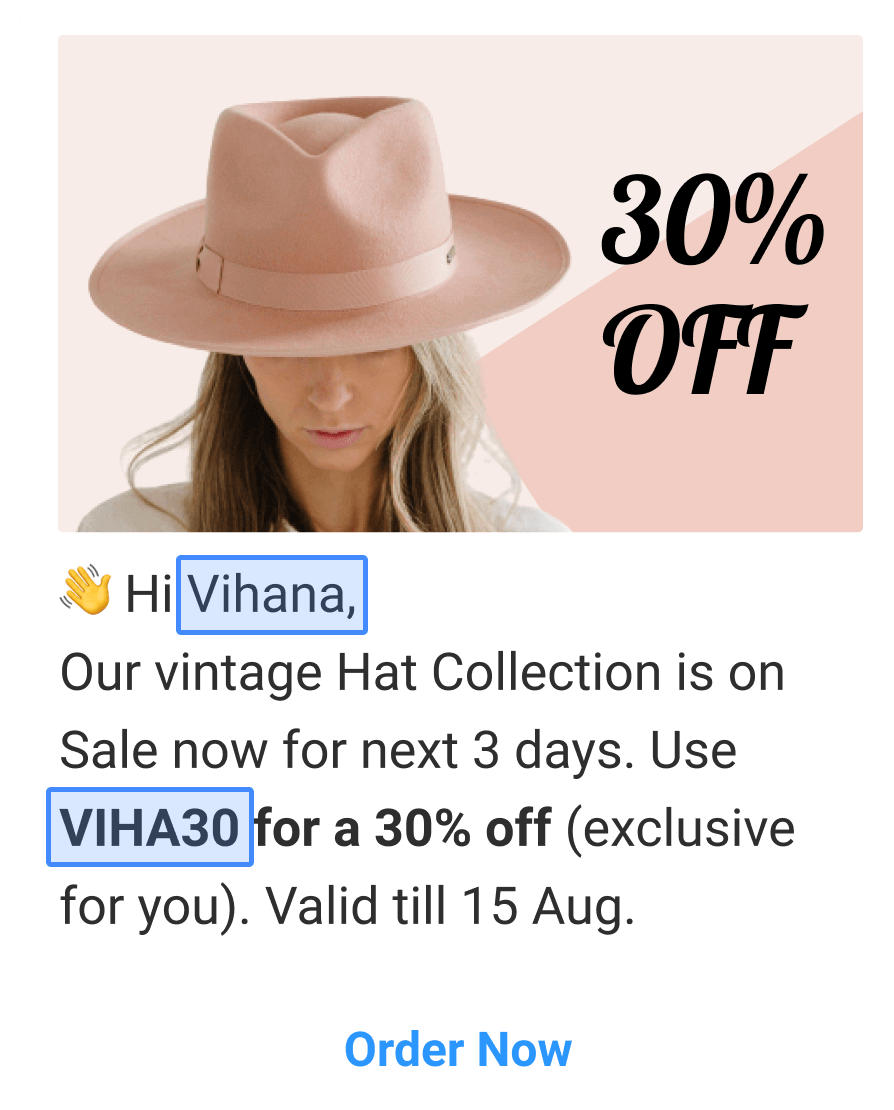
With over 1 billion active users, Facebook Messenger’s open rate is about 80% and clickthrough rate is 20%. Businesses exchange more than 20 billion messages via Messenger with customers every month!
Online stores use Facebook Messenger as a customer service channel, too. Customers as well, prefer to send messages to brands rather than call or email them.
But that’s not all. eCommerce brands successfully use Facebook Messenger to drive conversions across the customer journey – from nurturing leads to conversions and post-sales engagement.
Here’s a graphic that shows the potential audience that marketers can reach via Facebook Messenger:
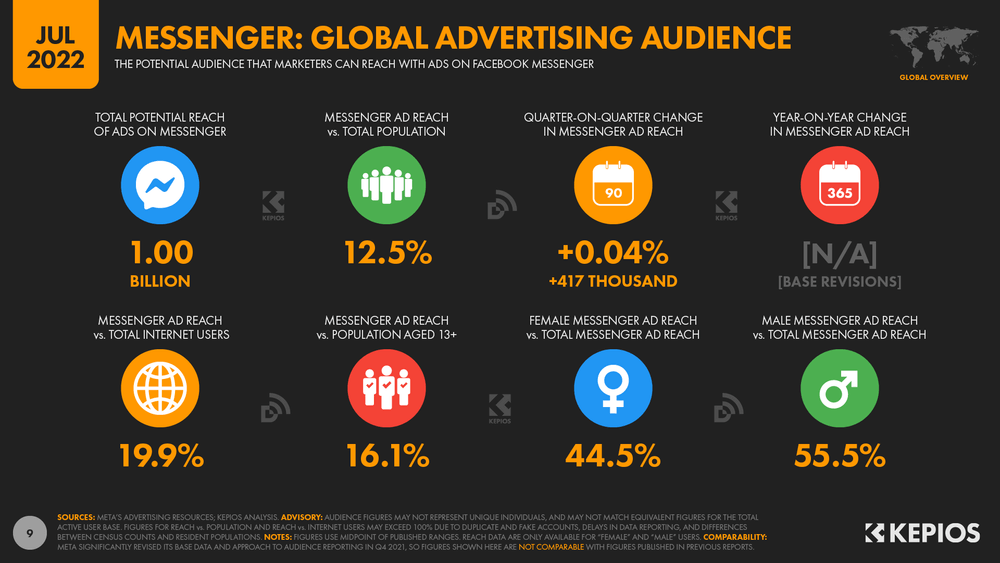
And here’s an example of a Facebook Messenger chat:
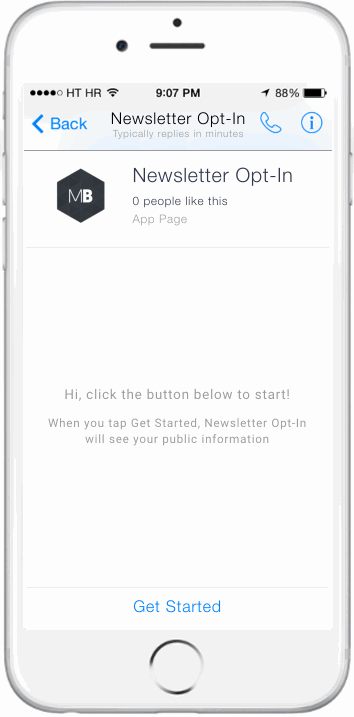
SMS has been one of the most preferred modes for customers to receive quick updates from brands. With a mobile-first mindset, a rapid growth of eCommerce and the need for one-on-one conversational marketing, SMS thrives in this most conducive scenario.
It has an open rate of 99% and a clickthrough rate of between 6% and 35% – the highest among the different message marketing channels.
And with the instantaneous nature of SMS most people click open the messages within three minutes of receiving them.
Brands use SMS messaging to send quick updates to customers about transactions, payments, deliveries, discounts, and brand announcements, among others.
Here are some more stats about SMS:
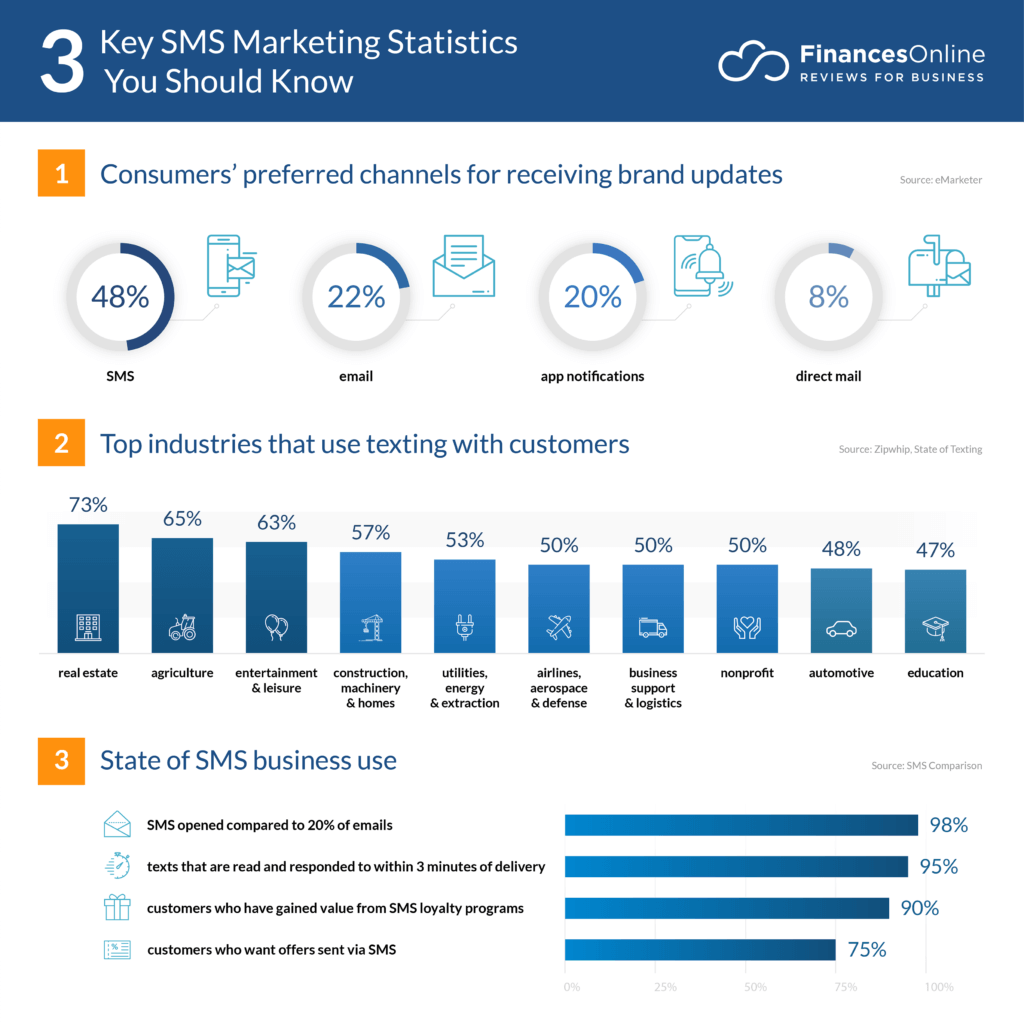
Telegram has 500 million active users monthly. (Source: Statista) Even though it has a high potential to help brands reach their marketing goals, many brands don’t consider including it in their message marketing strategy.
If you’re still wondering why to use Telegram, here are just a few of the many reasons:
You could take advantage of all the above features for your online store. Here are a few ways to do so:
Here’s an example:
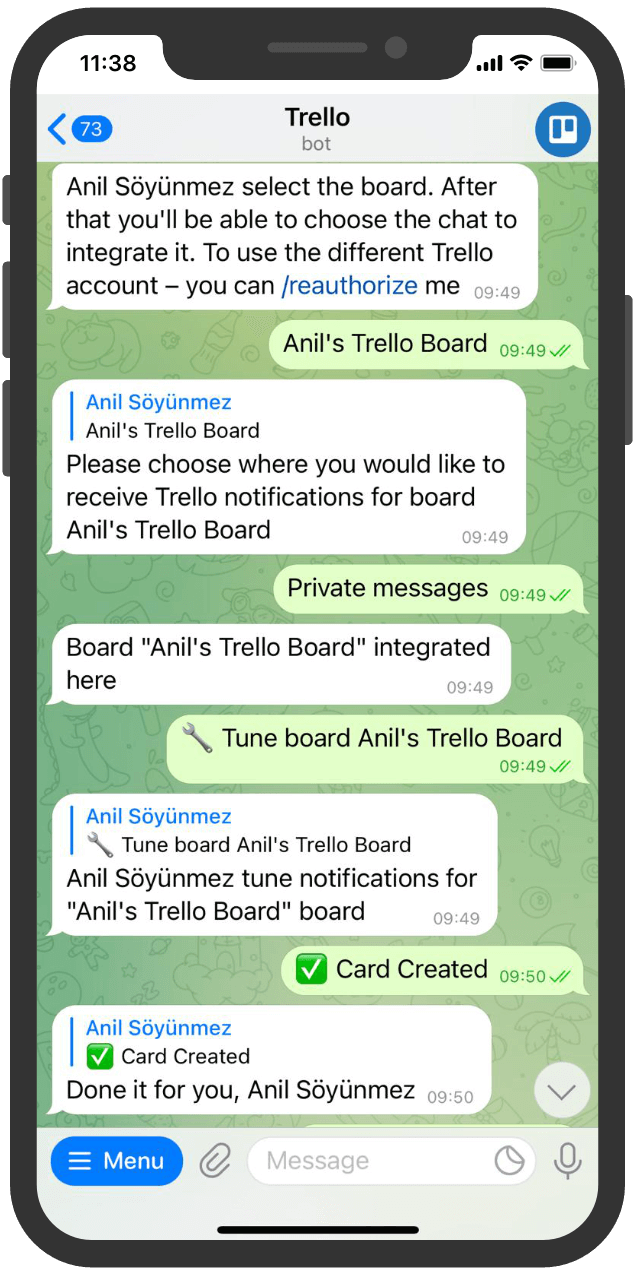
Live chat has the highest customer satisfaction level at 73%. And customers who use live chat are 2.8x more likely to convert compared to those who don’t use this tool to interact with brands. (Source: Freshworks)
To begin with, live chat provides customers an easy way to reach out to brands with queries, complaints, feedback, etc. Conversely, brands can respond to and resolve their queries within no time.
While automated chatbots can help drive conversions, live agents can strengthen customer relationships and loyalty with human-to-human interaction.
Here’s an example:
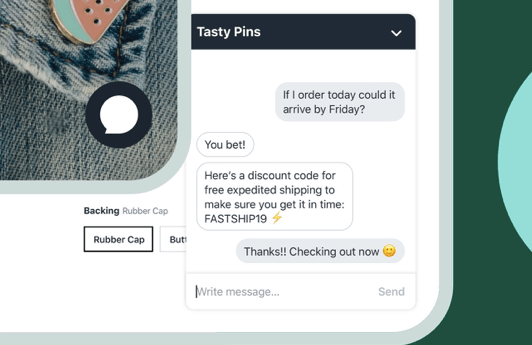
Another message marketing platform that’s become widely popular is Instagram Direct Message (DM). But there are many brands that, even though have an active Instagram account, rarely check their DMs to read consumers’ queries. That’s a big loss for them.
Check out these Instagram message marketing statistics:
With millions of users, and most wanting to interact with brands for instant responses, Instagram messaging makes it easy for brands to nurture leads and drive conversions.
Here’s an example:
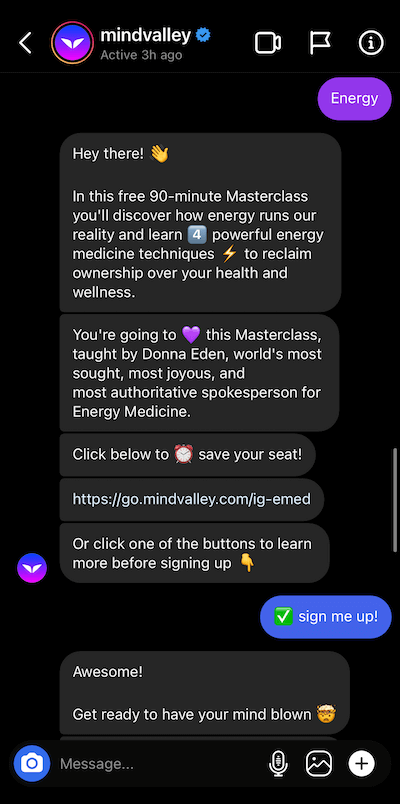
With half a billion monthly users and preference among marketers rising 120% year-on-year, Snapchat is known to offer great ROI to brands that have incorporated it into their marketing strategy. It’s a highly personal and engaging channel.
Snapchat offers features such as audio and video calling and notes, messaging, to facilitate one-on-one conversations with customers.
Here are some ways brands can use Snapchat:
Here’s an example:
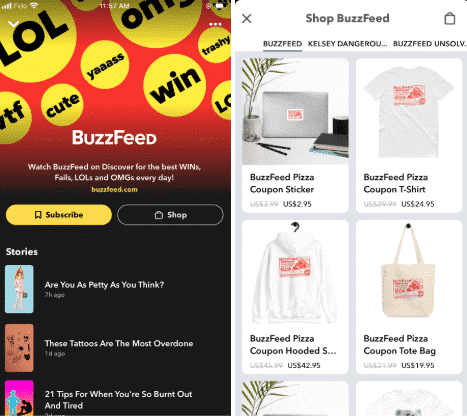
One of the best ways to send promotional announcements and reminders is by sending messages. It’s an easy way to send quick updates that customers won’t miss because messages have the highest open rate.
Moreover, promotional messages sent through SMS, WhatsApp, and Facebook Messenger have a higher open rate as people always have their mobile phones with them and usually don’t miss messages.
Here are some types of promotional messages you could send:
Today’s customers expect eCommerce brands to send them alerts as soon as there’s an update. The best eCommerce brands such as Amazon follow this practice, and customers have become used to this.
If they don’t receive updates about their purchases, they slip into anxiety and worry. Receiving timely updates has become a key part of customer experience. The faster you send updates to customers, the better it reflects on your brand.
And what better way to send alerts than messaging apps such as WhatsApp, SMS, Messenger, etc. With a high open rate of these message platforms, you can be sure customers would open and read your updates.
You could send the following transactional updates via the different messaging platforms:
Think like you’re a customer. When you buy something, you’re excited and eager to receive your order. Aren’t you? And you’d expect brands to share shipping alerts so that you’re in the loop of your order’s whereabouts.
Moreover, sending shipping alerts is also a good way to keep customers engaged in between the time that the order is placed and delivered. That way, customers are aware about the date and time the order will be delivered and plan their movements accordingly.
Apart from that, shipping alerts also help brands reduce unfulfilled deliveries. Or it enables customers to cancel orders before it gets delivered.
Here are the shipping related alerts that you could send via message apps:
Collecting reviews and feedback is a must for eCommerce stores. It not only helps drive sales, but can also help you make important business decisions based on what customers share with you.
Let’s back this up with statistics:
Here’s how you can use message platforms to collect reviews:
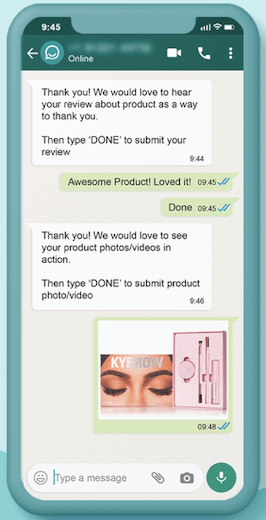
Using messaging platforms is an excellent way to boost sales by upselling and cross-selling.
Say a customer just bought a product on your site. While the customer is checking out, you could send them a live chat message to cross-sell a complementing item. Or, you could recommend a better product in place of what the customer’s about to buy.
All this can happen in real-time or as post-sales engagement. You could use the different messaging channels based on where the customer is in their journey and what actions they take.
For example, post-sales messages can be sent via WhatsApp, SMS, or Facebook Messenger; while real-time messages can be sent via live chat tools.
Here’s an example of Facebook Messenger:
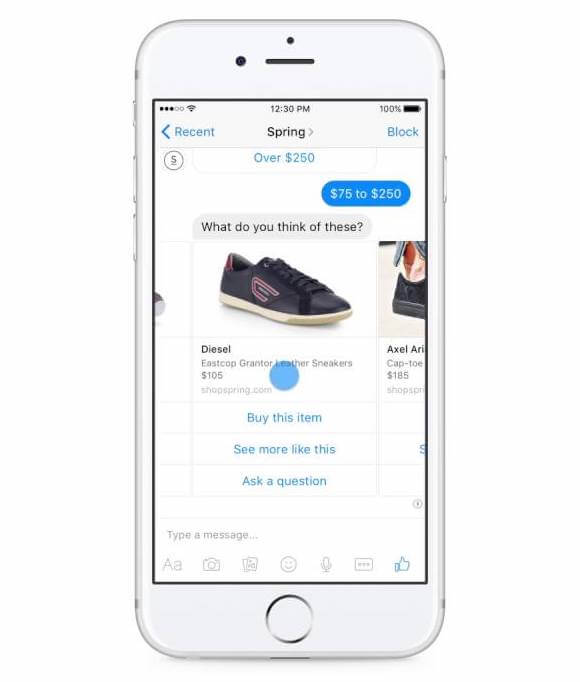
Last in our list, but not the least – you can use messaging platforms for real-time, efficient customer support. Most customers base their experience with brands on the quality of customer support they receive from brands.
When you use message platforms to offer support and help to your customers, you can benefit in many ways:
And here are the use cases for message platforms for customer support:
The answer is yes, you should use many different messaging platforms in your marketing plan. However, how many and which ones you should use, depends on your business, products, and customers preference.
You should try using all the above messaging platforms to determine which ones are working for you, and which platforms you can do without.
Having said that, some messaging apps such as SMS and WhatsApp are a must-have if you want to cater to today’s new-gen customers.
And for that, you can use tools such as QuickReply.ai – the best WhatsApp business broadcast API tool for online businesses.
Explore QuickReply.ai now!
Learn More:- https://www.ringcentral.com/us/en/blog/messaging-strategy/
Ans:- A marketing channel is a strategy or platform you employ to share your marketing initiatives with your target audience.
Ans:- Because they offer businesses a way to market and sell to their intended audience, marketing channels are crucial. In addition, marketing channels assist customers in locating and purchasing the ideal goods or services.
Ans:- The secret to successfully promoting your business is having a messaging strategy. Every piece of text associated with your company, from in-store signage and advertising to customer service emails and website copy, is influenced by how you present yourself, how you communicate, and how you place yourself in the world.
Tool and strategies modern teams need to help their companies grow.
Leverage the untapped growth potential of WhatsApp marketing to acquire and retain customers.
Lorem ipsum dolor sit amet, consectetur adipiscing elit, sed do eiusmod tempor incididunt ut labore et dolore magna aliqua. Ut enim ad minim veniam, quis nostrud exercitation ullamco laboris nisi ut aliquip ex ea commodo consequat. Duis aute irure dolor in reprehenderit in voluptate velit esse cillum dolore eu fugiat nulla pariatur.
Block quote
Ordered list
Unordered list
Bold text
Emphasis
Superscript
Subscript